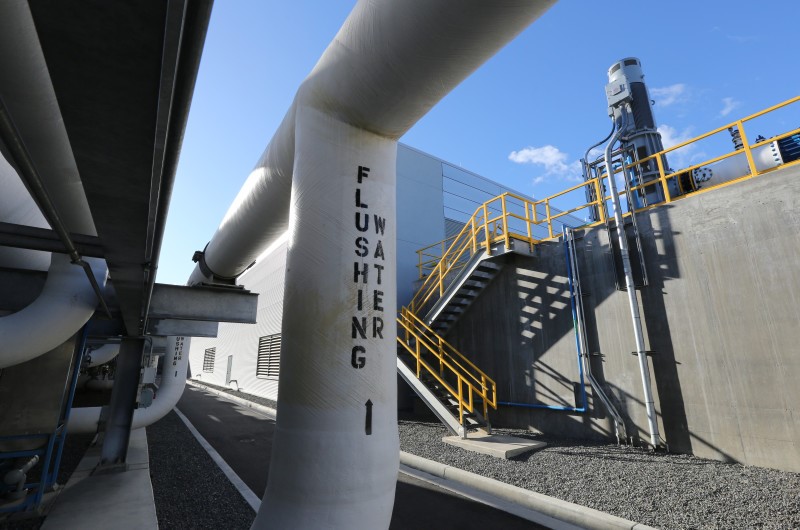Water agencies are working on dozens of projects to boost Southern California’s water supply. But many of the agencies are simultaneously boosting their own projects and arguing that others shouldn’t be built – partly out of a fear that ratepayers will only tolerate so many projects, and partly because of politics and territorialism.
Ry Rivard | Voices of San Diego | March 23, 2017 | Access Original
As California pulls out of the drought, expect to see a weird thing: water agencies opposing plans to help the state get through future droughts.
Water agencies are working on dozens of projects to boost Southern California’s water supply. Combined, these projects could provide enough drinking water for several million people. But many of the agencies are simultaneously boosting their own projects and arguing that others shouldn’t be built – partly out of a fear that ratepayers will only tolerate so many projects, and partly because of politics and territorialism.
Water districts in Southern California overlap and layer on top of one another. There are billions of dollars’ worth of projects under consideration, so if each one was built, customers caught in the middle could see their water rates skyrocket.
As a result, water agencies with their own projects want to be sure they’re not the last one standing before ratepayer support dries up. The game of musical chairs extends from San Diego to Sacramento.
At the top of the food chain is Gov. Jerry Brown’s $17 billion plan to shore up Southern California’s access to water from Northern California using two 35-mile underground tunnels. The San Diego County Water Authority has criticized the project as part of what it calls a “ratepayer protection program.”
The Water Authority gets about a fifth of its water from Northern California and is trying to wean itself off. To do that, it’s bought exclusive rights to Colorado River water and helped build a desalination plant in Carlsbad. It’s worried those things, along with its share of the costs for the governor’s project, will overwhelm San Diego ratepayers. They point out the project may not add to the region’s water supply, though it’s intended to make it more reliable.
The Water Authority also commissioned a report that suggests San Diego’s main source of water, the Metropolitan Water District of Southern California, is going to be stuck with too much water in coming years. That’s a bad thing? Yes, according to the Water Authority.
The Water Authority buys water from Metropolitan, the region’s largest water supplier, and then resells that water to local water agencies, like the city of San Diego’s Public Utilities Department.
Metropolitan is working on its own water supply projects, including what could be one of the world’s largest water recycling projects. But the Water Authority said Metropolitan is doing that even as the agencies that buy from it create their own projects.
Those agencies will have new water. Metropolitan will have new water. There’ll be too much water, the Water Authority says. Under that scenario, demand for Metropolitan’s water would fall even as Metropolitan’s costs rise. By the Water Authority’s estimate, Metropolitan could have way more water than it could sell. As Metropolitan’s largest customer, the Water Authority worries it’ll get stuck with the bill.

“You can’t just do everything because it sounds good,” said Dennis Cushman, the Water Authority’s assistant general manager.
A similar thing happened a few years ago, when Metropolitan and the agencies that buy its water, including the Water Authority, failed to coordinate the construction of new water treatment plants. As a result, Metropolitan, the Water Authority and the city of San Diego spent hundreds of millions of dollars building water treatment plants that sit mostly unused. (These plants make relatively clean water from rivers and streams safe for drinking. Recycled water plants, like the one Metropolitan is considering, make sewage water drinkable.)
Metropolitan counters that most local projects likely won’t happen, and the Water Authority’s worries about there being too much water are a bit odd.
“We actually think the challenge isn’t that we’re going to have too much, we think the challenge is that we’re not going to have enough,” said Jeffrey Kightlinger, Metropolitan’s general manager.
The Water Authority has had to deal with some of the same questions it has about Metropolitan within its own ranks.
The city of San Diego buys most of its water from the Water Authority.
So when the Water Authority was drawing up long-term plans last year, the city wanted to make sure the Water Authority wasn’t rushing to build a new desalination plant at Camp Pendleton. Desalinated water, while dependable, is also expensive. The Water Authority’s existing desal plant in Carlsbad provides about 10 percent of the region’s water but accounts for about 25 percent of the region’s water supply costs.
The city didn’t want another desalination plant showing up on its ratepayers’ tab before it put the shovel into the ground on its ambitious $3 billion plan to turn sewage into drinkable water. The Water Authority now says the Camp Pendleton project isn’t something it needs to do in the next 15 years, although it continues to study its options there.
That, Cushman said, is the kind of coordination he does not believe Metropolitan has. Metropolitan is still struggling to figure out how to divide up its unused water treatment plant costs.
Because this is like a layer cake, the city’s recycled water project has its own critics. Water officials in East County oppose the project, in part because they’re working on their own water recycling project.
Ry Rivard is a reporter for Voice of San Diego. He writes about water and land use. You can reach him at [email protected] or 619.550.5665.